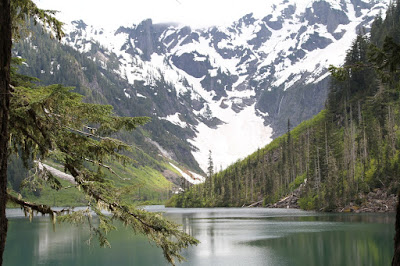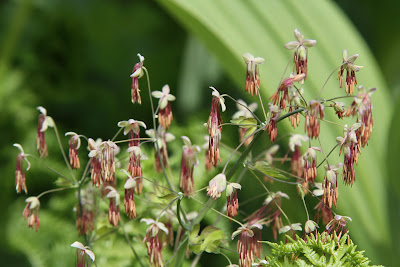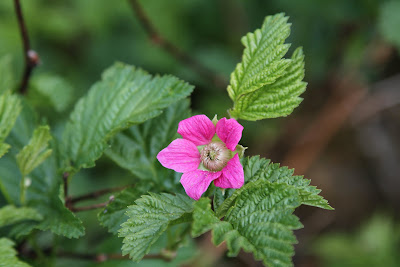
July 24 (day 1) :: St. Bees (Arrive in town and get settled.)
July 25 (day 2) :: St. Bees to Ennerdale Bridge
July 26 (day 3) :: Ennerdale Bridge to Rosthwaite
July 27 (day 4) :: Rosthwaite to Glenridding
July 28 (day 5) :: Lake Ullswater to Shap
July 29 (day 6) :: Shap to Ravenstonedale
July 30 (day 7) :: Ravonstonedale to Reeth
The motivation for documenting the flowers? I thought it would be fun to get to know the country in a botanical sense which is quite natural for me. Originally, I thought I would identify one plant a day, but it turns out I couldn’t stop at one. The tools? A camera, a guide book, and an iPad app. The camera: Canon Powershot SD1400. The book: A Naturalist’s Guide to the Wild Flowers of Britain & Northern Europe. The app: Interactive Flora of the British Isles.
Part II of this post is here.
Day 1: Convolvulus arvensis - Field BindweedWe stay at the Seacote Hotel near the ocean and once settled, I wall back into the old town and saw this bindweed on a fence bordering a field.

Day 2: Armeria martima – Thrift
This photo is taken a few minutes before we start the coast to coast walk. It’s on the beach at St. Bees, looking south.

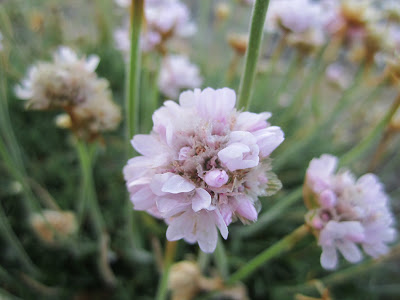
Day 2: Tripleurospermum maritimum – Sea Mayweed
On a rock ledge at St. Bees.
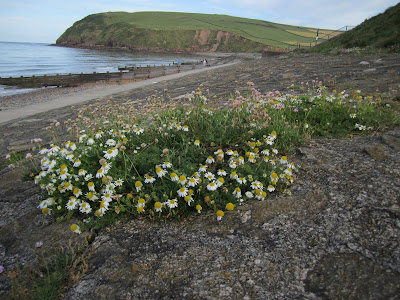

Day 2: Aglais urtica - Small Tortoiseshell
Our first real day of hiking and it starts out as a beautiful day on the cliffs north of St. Bees. There is a lot botanically and insect-wise to look at such as this Small Tortoiseshell butterfly.
Day 2: Campanula rotundifolia – Harebell
This is seen along the cliffs just North of St. Bees.
Day 2: Succisa pratensis - Devil's Bit Scabius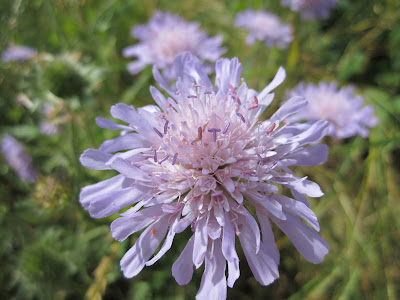
Day 2: Cirsium arvense - Creeping Thistle
This thistle smells sweetly. I pop the blossom off and walk a while with it, sniffing it. This picture is taken just after we leave the cliffs north of St. Bees and head east.
Day 2: Juncus effusus – Soft Rush
In some spots, we see large areas covered in rush, typically (over) grazed pasture.
Day 2: Digitalis purpurea – Foxglove
Day 2: Matricaria discoidea - Pineapple Mayweed
One of my favorite plants. It smells like pineapple when you bruise it. 
Day 2: Epilobium hirsutum - Great Willowherb
A cousin of Fireweed.
Day 3: Dactylorhiza fuchsii - Common Spotted Orchid
Spot this as we just start to walk along Ennerdale Water near the weir at the west end.
Day 3: Dactylorhiza maculata - Heath Spotted Orchid
As we walk east away from Ennerdale Water along the River Liza I spot this orchid near the Low Gillerthwaite Field Centre.
Day 3: Narhecium ossifragum - Bog Asphodel
Along Ennerdale Water.
Day 3: Prunella vulgaris - Self Heal
A common plant this can easily be overlooked. Once you see it, you see it everywhere.
Day 4: Stachys sylvatica - Hedge Woundwort
Smells like sulfur when bruised. I see it in many locations, typically shady spots.This is photographed in Glenridding as we make our way to the Inn on the Lake.
Day 4: Epilobium angustifolium - Fireweed or Rosebay Willow Herb
Epilobium is quite common. On the train ride from London to Penrith I remember seeing quite a bit of it along the tracks. 
Day 5: Ulex eruopaeus - Common Gorse
The dreaded Gorse. In reality, we don’t encounter it too much. If you’re a land owner I suppose it is a pain, but for hikers, the stinging nettle is more likely to get you.
Day 5: Geranium pratense - Meadow Crane's-bill
Especially common on the sides of small country lanes. 
Day 5: Spiraea salicifolia – Bridewort
Don’t see Bridewort that much, only this one time.
Day 5: Jasione montana - Sheep's-bit
Day 5: Stellaria holostea - Greater Stitchwort
Day 6: Urtica dioica - Stinging Nettle
I was aware of this plant before Day 6, but Day 6 is the first time I feel its sting.
Day 6: Crataegus monogyna – Hawthorn
This tree is quite common found by itself in open areas.

Day 6: Myosotis laxa - Tufted Forget-me-not
I see this flower along a small stream as we made our way into Orton.
Day 6: Calvatia utriformis - Puff Ball Mushroom
The puff balls look so strange when you come across them in grassy areas.
Day 6: Achillea ptarmica – Sneezewort
Day 6: Galium aparine - Common Cleavers
Quite common and at times can blot out other vegetation. This is photographed just outside of Ravenstonedale.

Day 7: Filipendula ulmaria – Meadowsweet
Meadowsweet has a nice scent that reminds me a little of baby powder, a subtle scent.
A Naturalist’s Guide to the Wild Flowers of Britain & Northern Europe.





















